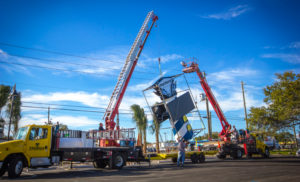By Jim Hingst
When acquiring new equipment, such as a wide format printer or a service truck, one of your key decisions is whether to buy or lease. 
One advantage when leasing is no down payment is required. What’s more, at the end of the lease term, you can either buy the equipment at a discount or upgrade to the next latest-and-greatest technology.
Financing business equipment is a type of business loan that is strictly used for buying equipment. This type of loan is not quite as difficult to obtain as other types of loans—the reason being that the equipment you are buying is in itself collateral for the loan. That way, it is less of a risk for the lender.
If you are borrowing money for equipment, explain to the lender exactly what type of equipment that you want to buy or lease, its cost, and why it’s important for your business.
Tangible assets, whether they rapidly become outdated or not, depreciate over time. In some cases, leasing makes more sense than purchasing, if the equipment has a relatively short lifecycle. For example, it may be wiser to lease digital printing equipment because the technology changes quickly.
In financing equipment, lenders look at three key factors—your credit score, your annual revenue, and your length of time in business. Because the equipment serves as collateral for the loan, you may qualify for financing even if your credit score is less than ideal.
However if your business is a startup or you’ve been in business for fewer than two years, getting approval for a loan may be difficult. Lenders may also require a down payment in approving financing for an equipment purchase.
When deciding whether to buy or not to buy, ask yourself: Is the equipment a necessity for staying competitive in your market? What increase can you realize in employee output? How will the equipment improve the quality of your finished goods? What improvement in sales and profits will you generate? How long will it take to pay for the equipment?
An advantage to leasing is that lower initial cash is required. What’s more, leasing packages will occasionally cover maintenance. In some cases, lease payments are tax deductible. However depreciation of leased equipment is not deductible. 
Ideally, when buying equipment, your best option is to pay cash and avoid the headaches involved in the loan process. Of course, that usually isn’t practical. Paying cash depletes your working capital, which is the money you have on hand to pay your current financial obligations. These obligations include paying vendors and utility bills along with paying your employees.
If you’re considering paying cash when buying equipment, estimate whether you will have sufficient cash following the purchase.
To determine your working capital needs, track your monthly inflows and outflows of cash. Using this data, you can anticipate sales and expense trends.










